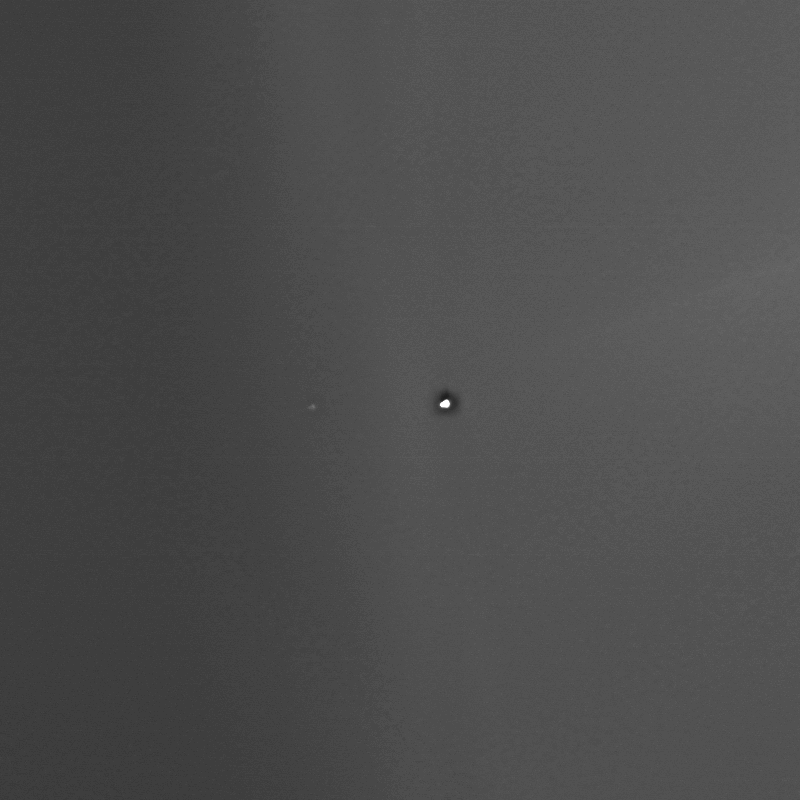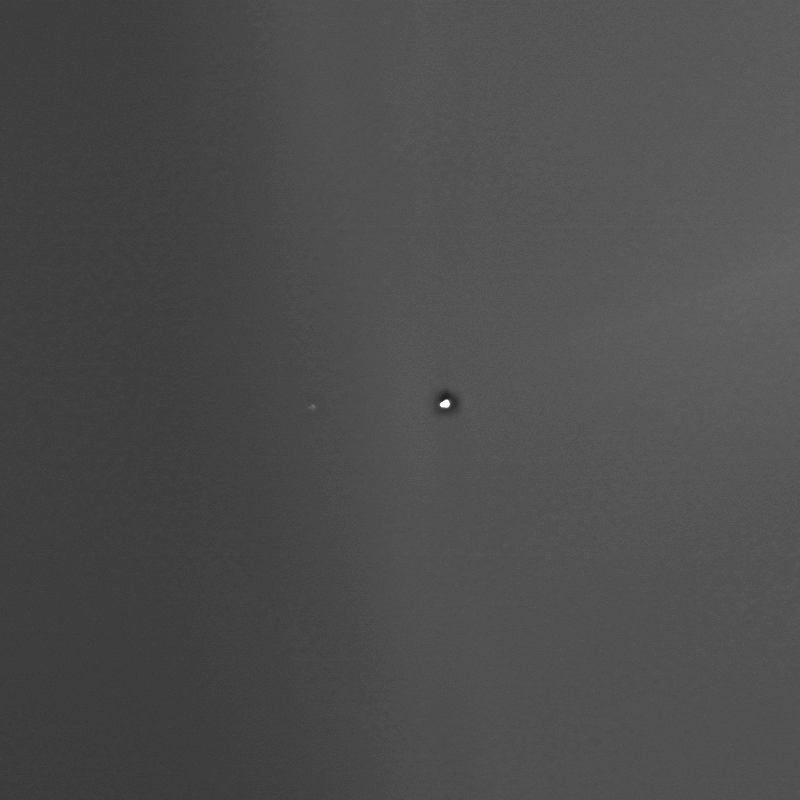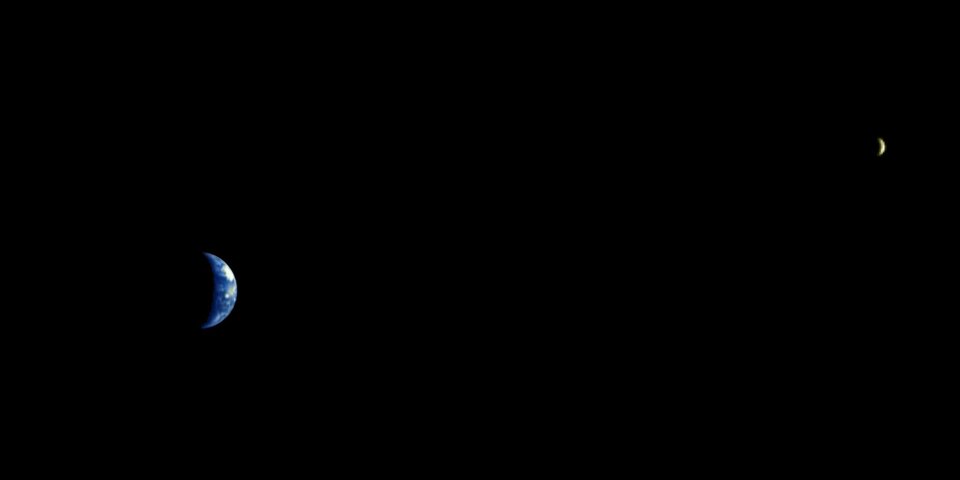12.07.2023

You are on Mars, looking back at your home planet Earth. How do you feel?
Look again over several weeks and – with the aid of binoculars – you’ll see a little white dot orbiting around a bigger dot. That’s our Moon, orbiting Earth.
This is certainly not the most impressive image you’ve ever seen of Earth and the Moon from a space exploration mission, but this simple image from ESA’s Mars Express orbiter still manages to capture that poignant ‘Pale Blue Dot’ feeling.
Earth was first described as a pale blue dot by scientist and communicator Carl Sagan, inspired by a humbling 1990 image captured by NASA’s Voyager 1 as it looked back towards Earth. The image moved Sagan to make his influential speech reflecting on Earth as the only world known so far to harbour life and underscoring our responsibility to deal more kindly with one another, and to take care to preserve our home planet.
More than three decades have passed since that iconic image was taken, during which time numerous space probes have similarly turned to image Earth as they voyage on to their destinations far and wide in the Solar System. Rovers and orbiters around Mars have also sent their share of snapshots while exploring Mars. Yet Sagan’s message of the 1990s remains more urgent than ever.

“On the special occasion of Mars Express’s 20th anniversary since launch, we wanted to bring Carl Sagan’s reflections back to the present day, in which the worsening climate and ecological crisis make them more valid than ever,” says Jorge Hernández Bernal of the University of the Basque Country and Sorbonne University, and part of the Mars Express team who initiated this image.
“In these simple snapshots from Mars Express, Earth has the equivalent size as an ant seen from a distance of 100 metres, and we are all in there. Even though we have seen images like these before, it is still humbling to pause and think: we need to look after the pale blue dot, there is no planet B.”
The sequence of images was acquired by the super resolution channel (SRC) of Mars Express’s High Resolution Stereo Camera (HRSC), which is primarily used for observing Mars’s two moons and the stars. They show the Earth and its moon on 15, 21 and 27 May, and 2 June 2023. This covers more than half of the Moon’s monthly orbit around Earth.
The final image in the sequence marked the anniversary of the launch of Mars Express on 2 June 2003. It was taken shortly before a special anniversary event during which images of Mars taken by the spacecraft’s Visual Monitoring Camera (VMC) were beamed ‘live’ back to Earth in a first-of-its-kind broadcast.
“There is no scientific value in these images, but since the conditions allowed us to point the HRSC to Earth and shortly after the VMC to Mars, we took the opportunity to create our own portrait of home on this incredible mission milestone for Mars Express,” says Daniela Tirsch, member of the Mars Express HRSC team at the German Aerospace Center, DLR.

The very first planetary image taken by the mission 20 years ago was of the Earth-Moon system. On the night of 3 July 2003, the spacecraft was pointed backwards to obtain a breathtaking view of our planet and moon from a distance of just eight million km while on its way to Mars. By comparison, the 2023 images were taken from around 300 million km.
“Perhaps it will only be another 20 years before humans can look up from the surface of Mars to see Earth in the night sky,” adds Colin Wilson, ESA project scientist for Mars Express and the ExoMars Trace Gas Orbiter. “ESA has a long history of Mars exploration, first from orbit with Mars Express and the Trace Gas Orbiter, and in the next decade on the surface with the Rosalind Franklin rover and the completion of the Mars Sample Return missions. The next bold ambition is of course to explore with humans.”
The next time you look up at the night sky and see Mars, think about Mars Express – or the next generation of Mars explorer – looking back at us!
Quelle: ESA
